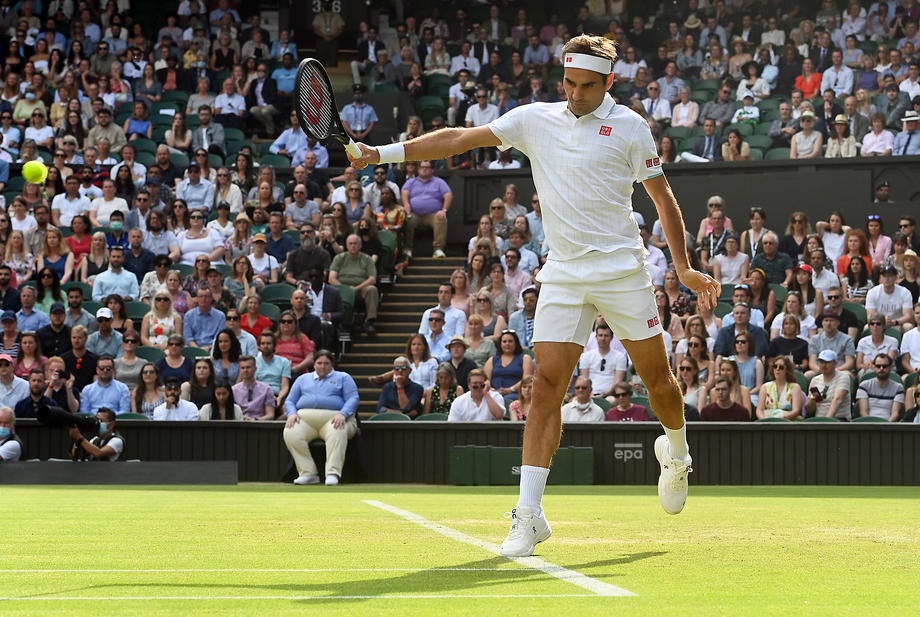- Australian Open Draws and Order Of Play for Thursday, January 23, 2025
- Ricky’s pick for the Australian Open quarterfinal between Sinner and De Minaur
- Australian Open Draws and Order Of Play for Wednesday, January 22, 2025
- Goran Ivanisevic Is No Longer Coaching Elena Rybakina
- Ricky’s pick for the Australian Open quarterfinal between Alcaraz and Djokovic
- Australian Open Draws and Order Of Play for Tuesday, January 21, 2025
- Tennis Report From Australian Open: Novak Making A Run by Alix Ramsay
- Australian Open Draws and Order Of Play for Monday, January 20, 2025
- Five-set frenzy continues in third round of Australian Open
- Australian Open Draws and Order Of Play for Sunday, January 19, 2025
- Pam Shriver’s Car Containing Grand Slam Trophies Stolen in California
- FREE GIFT WITH PURCHASE Of Incrediwear Supports
- Australian Open Tennis 2025 by Alix Ramsay
- Ricky’s picks for Day 6 of the Australian Open, including Djokovic vs. Machac
- Australian Open Draws and Order Of Play for Friday, January 17, 2025
Tennis News • U.S. Open Under Threat As ATP’s New Boss Tries To Salvage Season
- Updated: April 10, 2020
By Alix Ramsay
As the Covid-19 pandemic continues to paralyse the world, the business of sport is the least of anyone’s concerns. Yet for those who run professional sport, simply trying to keep going is their top priority.
Of course, the big, global sports make a lot of money. But they also spend a lot of money – and they need their athletes to be playing in order that they can keep the cash flowing in. But no one is playing anything anywhere at the moment.
As the new boss of the ATP, Andrea Gaudenzi must wonder what he has taken on. His tenure began at the start of the season as the bushfires were raging across Australia – so threatening the whole Australian summer swing including the Open in Melbourne – and then dived headlong into the Coronavirus crisis.
The BNP Paribas Open in Indian Wells was cancelled on March 8 and since then, tennis has stopped. The earliest date suggested for a restart is July 13 but that has only been lightly pencilled into the diary – no one would be surprised if the hiatus continues well into the summer. Some think the whole season may be written off.
Gaudenzi, though, is hopeful that tennis can salvage something from 2020. In his first big interview since taking his place at the helm of the ATP, he spoke to the Italian media from his home in London.
He came to the job with big ideas and grand plans for the future but most of those had to be shelved while he dealt with the immediate problems. If tennis is to resume this year, how does the ATP and the rest of the sport reschedule their biggest and best tournaments while, at the same time, saving their smaller events?
The French Tennis Federation was the first off the mark. Once Roland Garros’s original dates were cancelled, they took a unilateral decision to claim the two weeks at the end of September and the beginning of October – the French Open would now be held from September 20 to October 4. That went down like a lead balloon with the rest of the tennis world. But the first move had been made.
That left Gaudenzi with 101 and more variables: would the US Open actually take place? If Roland Garros could be held on those dates, how to organise the remaining months of the season?
As quoted on ubitennis.net, he explained his current thinking: “We are working on the possibility of a four-weeks clay swing after the US Open. The best-case scenario would be to have the North American swing during the summer, then the clay, then Asia, and then the ATP Finals. If that were to happen, it would mean that we saved 80 per cent of the season after cancelling the grass tournaments. With seven Masters 1000 and three Slams taking place, there wouldn’t be much room for complaints.

“If the US Open gets cancelled, the complexity of the situation would grow exponentially, because we should consider playing in November and December too, but at the moment we are focusing on a re-start after the Wimbledon slot.”
That is all well and good but with the terrible news coming out of New York at the moment, it does seem highly unlikely that the city will be in a position to allow 2,000-3,000 tournament staff to work in close proximity at Flushing Meadows in order to stage the event. Then comes the problem of whether players from all over the globe will be allowed leave their own countries – at the moment, the Foreign Office is advising all UK nationals against international travel for all but essential reasons – and whether, come the end of the summer, the United States will allow free access for foreign nationals.
If there is any good to be taken from this global crisis, Gaudenzi thinks that it might – just might – persuade the various factions in tennis (they may wish to think of themselves as governing bodies) to work together. That was one of his dreams when he took the job at the ATP.
“These first few months played out differently than I expected,” he said, “as all my plans were obviously delayed and slowed down. Huge opportunities could arise from this crisis, one of which is the chance for the main stakeholders in the game (the ATP, the WTA, the ITF, and the slams) to cooperate more, since we are all expressions of the same game; we cater to the same fans, we are part of a story we are telling together, even if tennis is a very fragmented game, both with regards to the types of competitions and media-wise.
“My idea was to nurture a collaborative spirit. We don’t need to worry about our day-to-day business or about resuming play during such a crisis – witnessing what doctors and nurses are experiencing every day helps us put things in perspective. We need to use this time for self-reflection and for long-term planning, to create the future we want for our sport, but there are clearly much bigger issues.”
At the moment, that “future” looks a long way off as the “bigger issues” dominate the news agenda.
🎾🎾🎾






